Sand Hills Golf Club
Architect: Coore & Crenshaw (original design, 1995)
Location: Mullen, NE
In 1995, in the remote Sandhills of Nebraska, Bill Coore and Ben Crenshaw changed the trajectory of golf course architecture. Sand Hills Golf Club proved that a faraway course on spectacular land could work. It was a “field of dreams” moment for the golf industry, which had been focused for decades on building in population centers. Developer Dick Youngscap deserves immense credit for pushing the crazy idea of taking golf to the small town of Mullen, four-plus hours away from any major airport.
All our course reviews are available in Club TFE, our membership offering. To learn more about Club TFE and to join, click here!
-
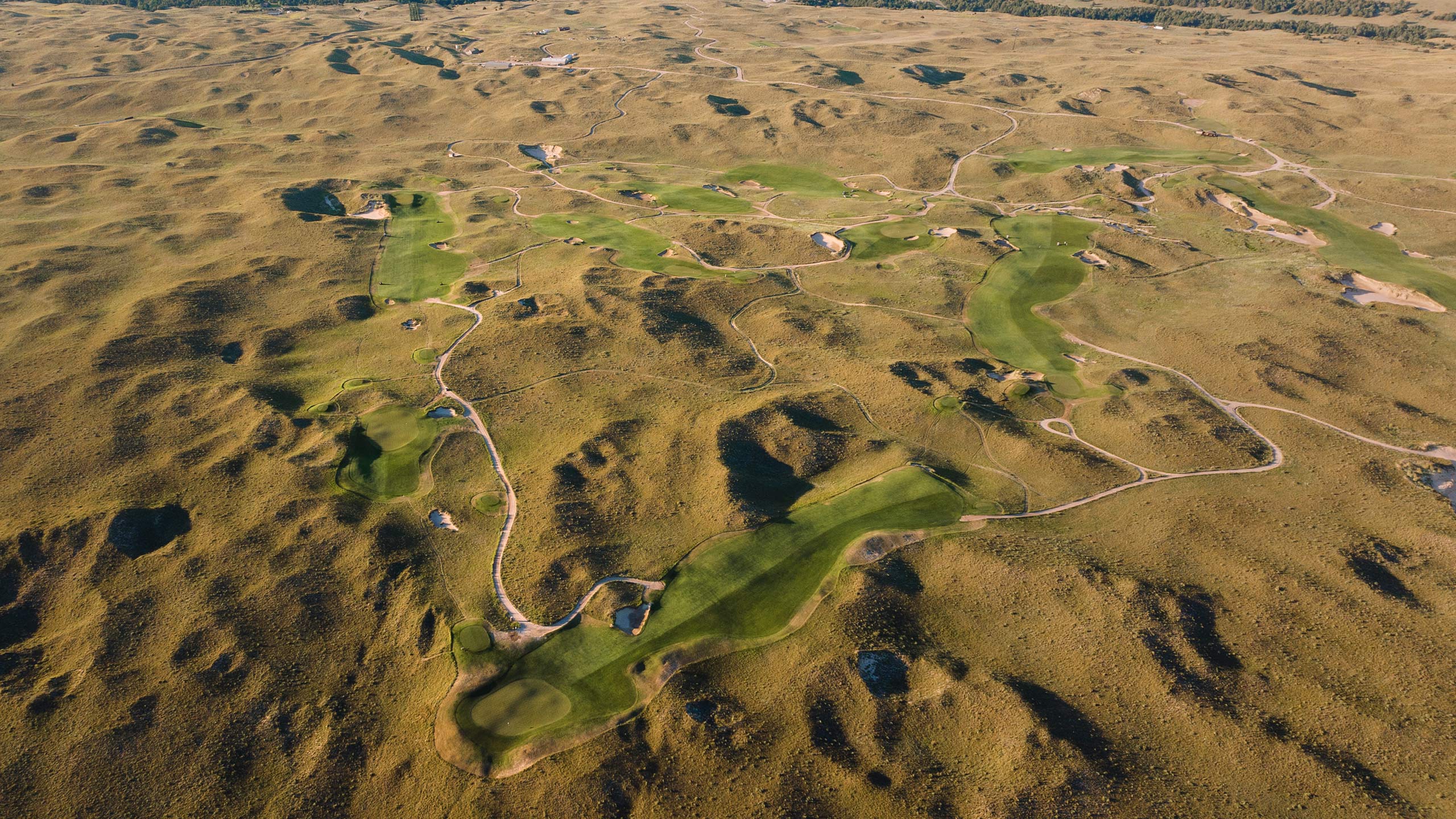
The front nine at Sand Hills
-
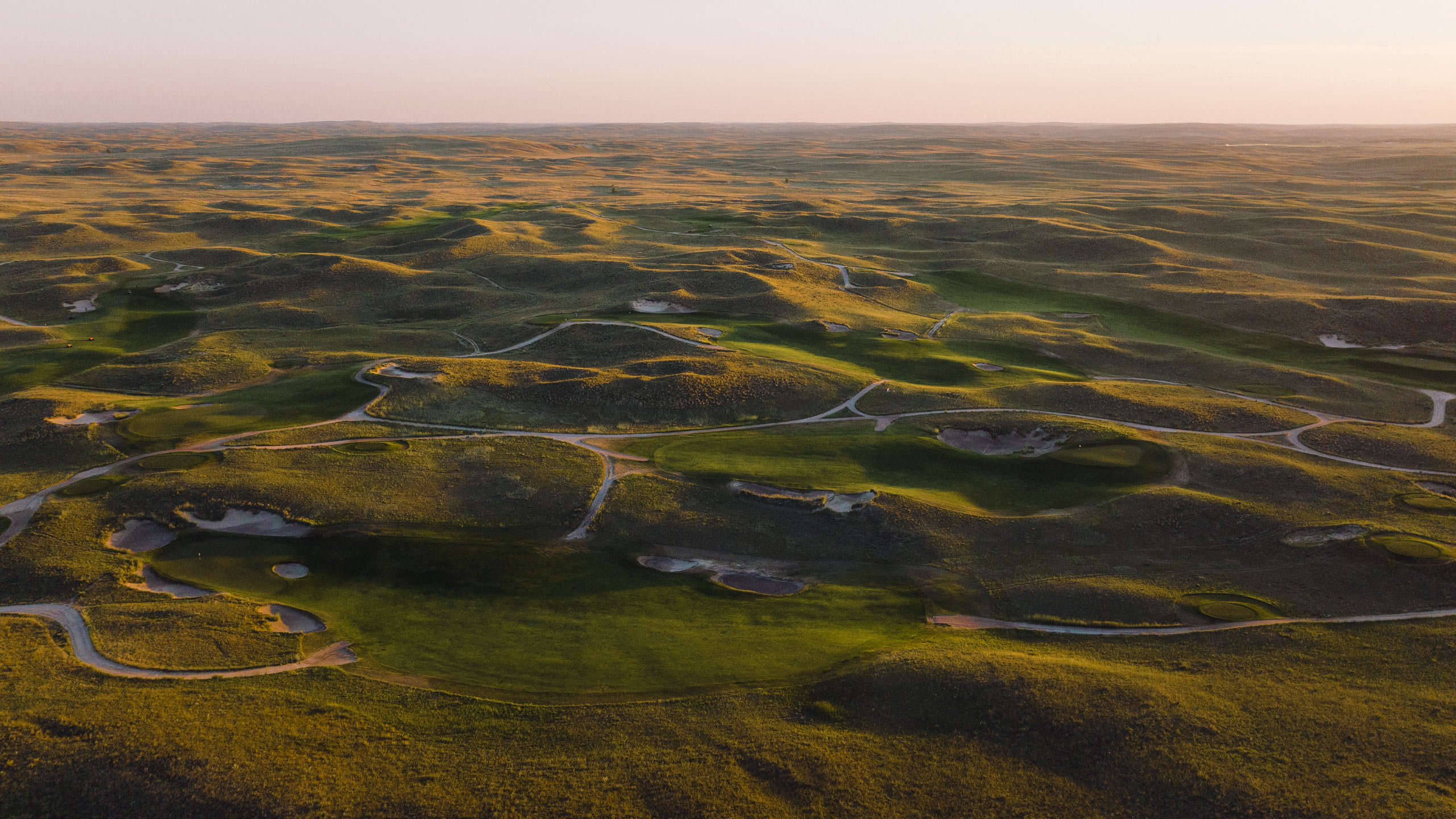
The front nine at Sand Hills
-
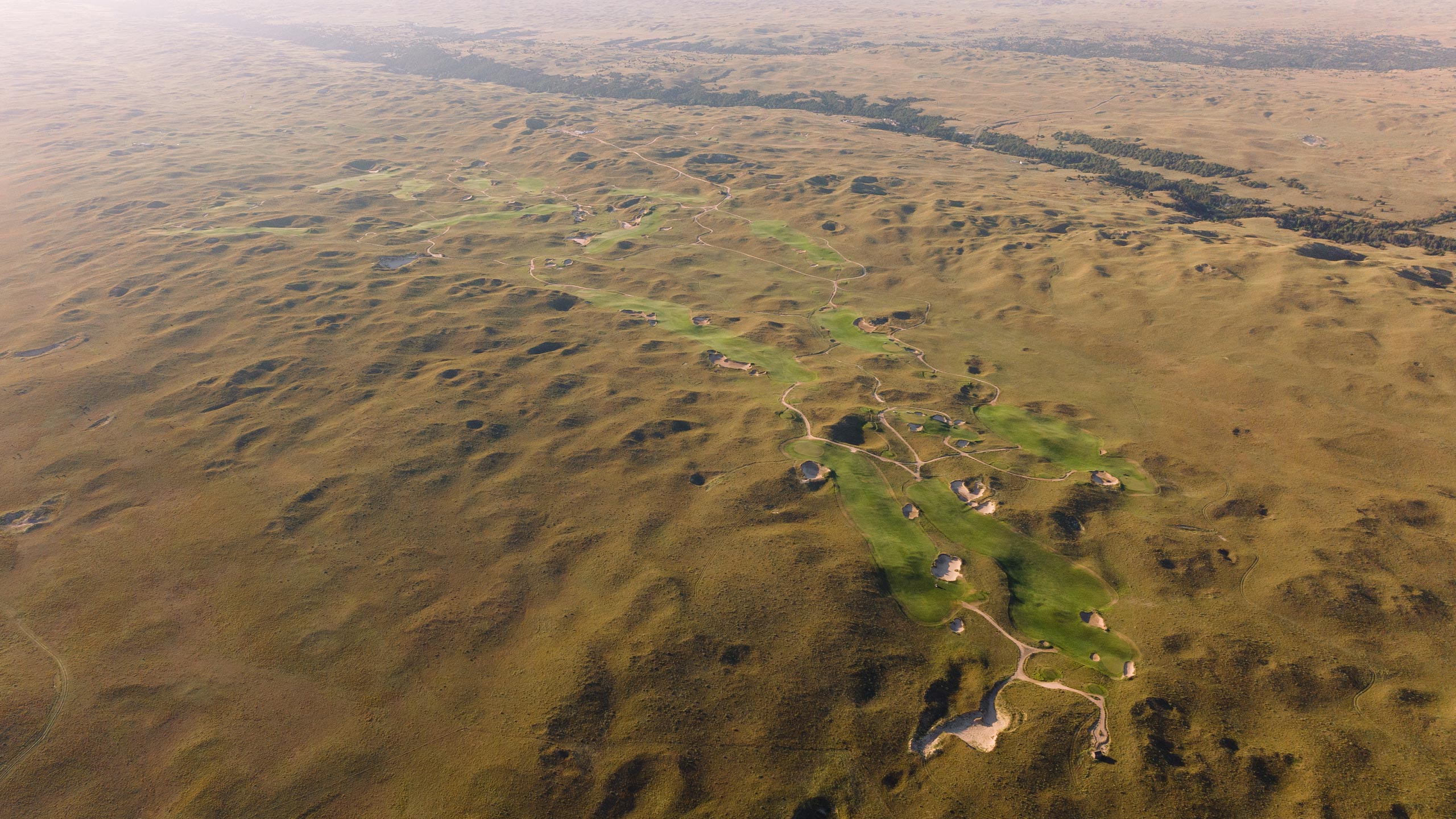
All 18 holes at Sand Hills
-

The 10th hole at Sand Hills
-

The 11th hole at Sand Hills
-

Holes 4-8 at Sand Hills
-

Holes 7-8 at Sand Hills
-
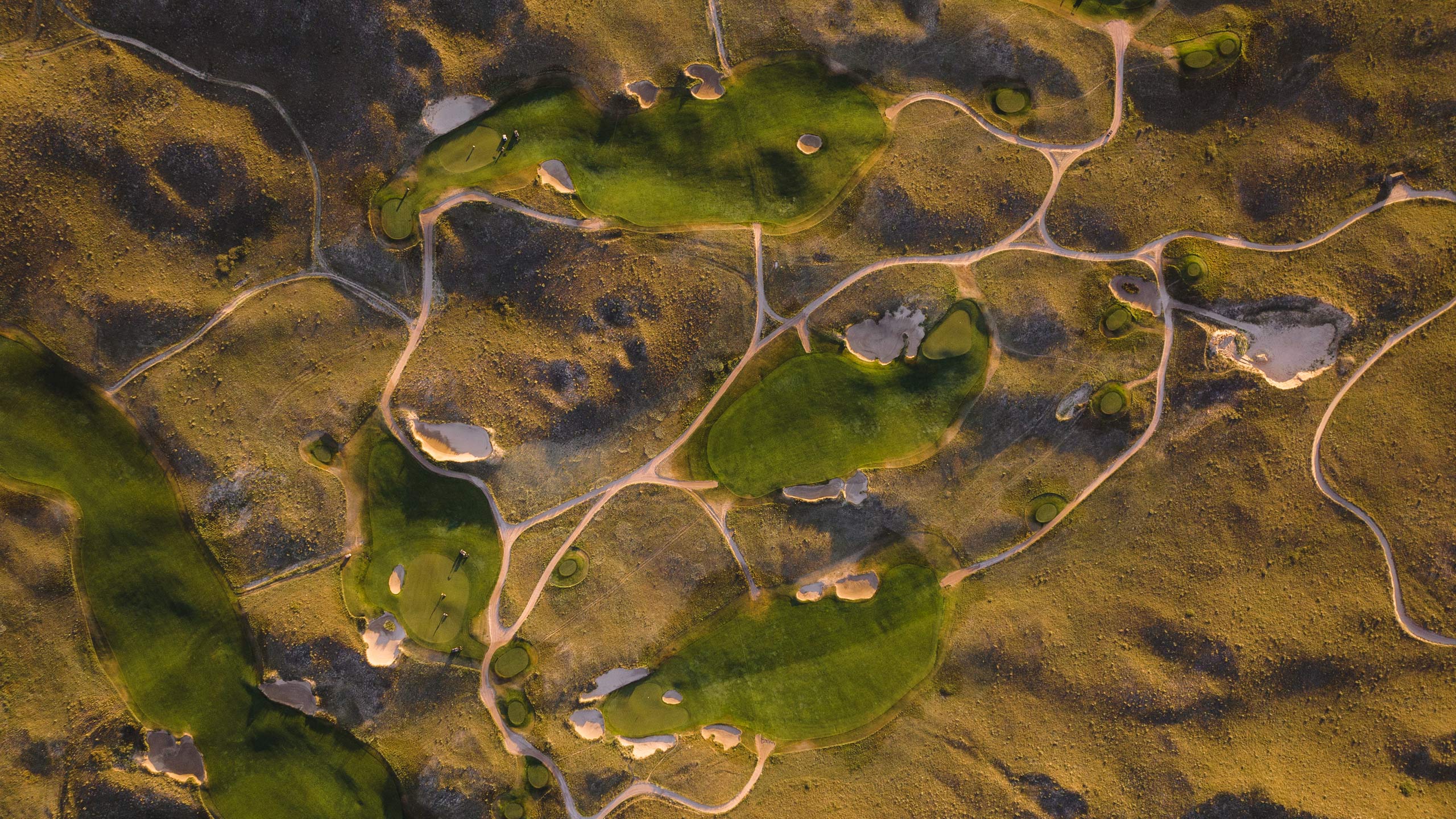
A section of the front nine at Sand Hills
Take note…
- Sand Hills was built on a shoestring budget. Coore & Crenshaw did very little earthmoving. The only green that required a considerable shaping effort was the par-4 fourth green, which benches into the big sand dune and falls off hard on the right side.
- In its original form, the 12th hole did not have a green-side bunker. That was added one year after opening to enhance the strategy of the hole.
- On many properties, creating 18 holes is a challenge. At Sand Hills, the challenge was figuring out which 18 holes to use. Near a staircase in the clubhouse is a constellation map of holes from Coore & Crenshaw’s many routing ideas and efforts. It shows the over 130 potential golf holes in and around the valley where the current course resides.
Favorite hole
No. 2, par 4, 284-458 yards
I’m a sucker for great holes early in the round, but there are a few other reasons why I love the second at Sand Hills:
- Restraint – On a site where there are natural spots for bunkers everywhere you turn, the second hole has only one in play, and it’s there more to deceive golfers than to gobble up golf balls.
- Green site – The most memorable moment from my first visit to Sand Hills was climbing the hill on the second hole and walking toward the green. The horizon line formed by the back of the green is all you see, and you feel like you’re approaching the edge of the world. Once you see the endless sand dunes in the distance, you get a sense for the magnitude of the locale. This view gives a context for the rest of the round.
- Green contours – This is one of the most undulating greens on the course, and it’s really fun to hit shots into it. The ball will tend to funnel to pins on the left and be deflected from pins on the right. Both sides are exciting in different ways.
-

The stunning par-4 second hole
-

The second hole at Sand Hills
-
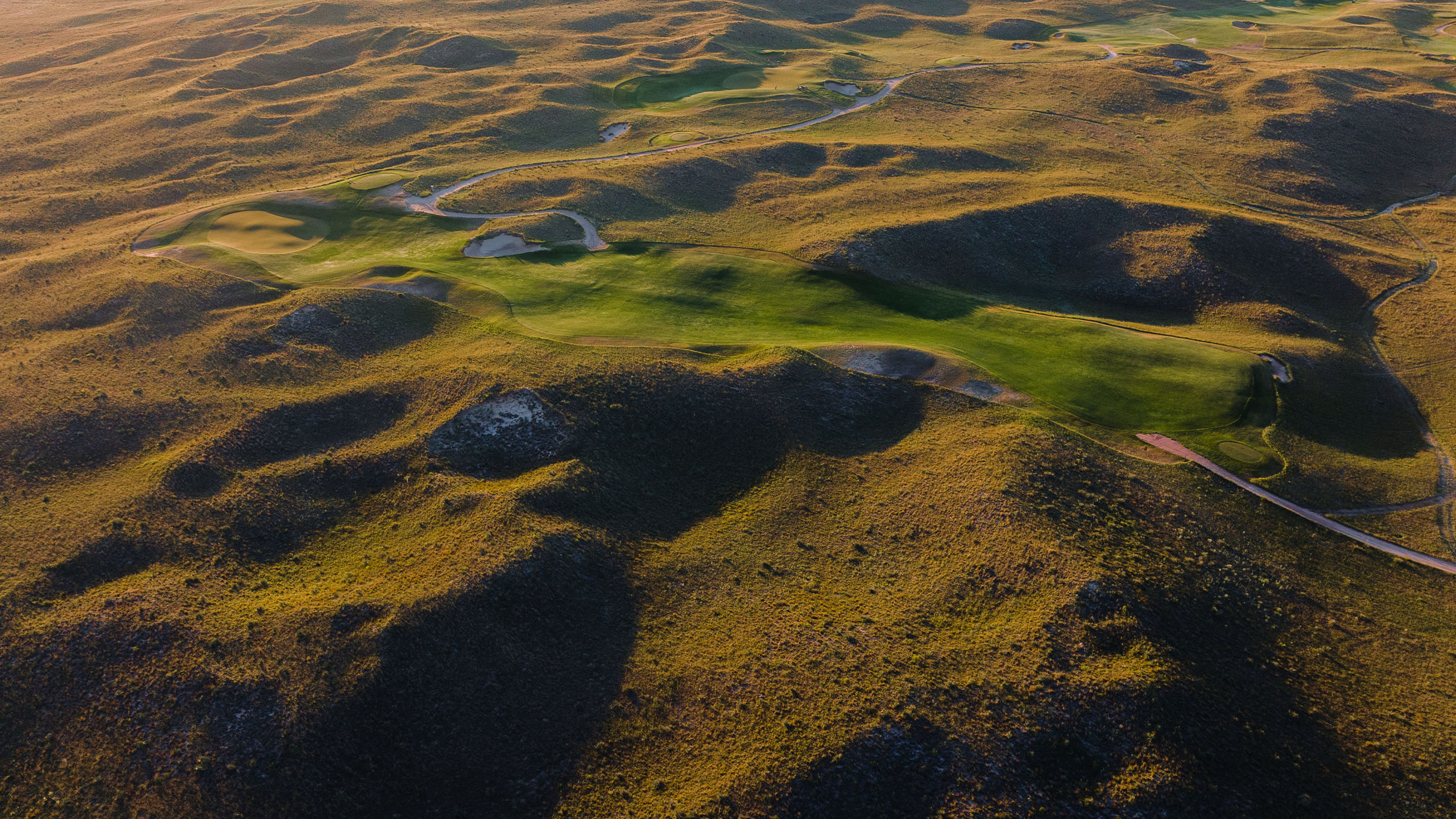
The second hole at Sand Hills
Overall thoughts
This is one of the greatest courses in the world. There’s so much to marvel at as you walk it. Two aspects of Sand Hills that stick with me most are how well the course embodies its place and how thoroughly worked out the strategic concepts of the holes are.
I can’t think of any other club I’ve been to that has such a distinct feel and culture. These traits are shaped by the town of Mullen more than the membership itself, and much of the credit for that dynamic belongs to the club’s visionary, Dick Youngscap, who empowered the local staff to be culture setters.
Sand Hills is unapologetically unique and its own. It’s not trying to be anywhere or anything else. Almost everyone treks long distances to get there, and the emphasis is on one thing: the golf. The accommodations are spartan, the food is outstanding but simple, the people are incredibly nice, and the golf is world-class.
Part of what this course and its culture prove is that luxurious accommodations and amenities aren’t necessary. What is necessary is an outstanding course and a strong community looking after it. It’s easy to see that Mike Keiser learned something from the culture of Sand Hills and applied it to Bandon Dunes. If you’re curious what Sand Hills is like, imagine a more intimate and remote Bandon Dunes with slightly less stellar accommodations.
Now on to the golf course itself. Every hole at Sand Hills has preferred lines. These can change day to day based on different hole locations and winds. Coore & Crenshaw were working with a tremendous place for strategic golf, as the natural elements are off the charts. The wind, dry conditions, and sandy soil make everything come alive. Coore & Crenshaw found strategy in a variety of ways: natural terrain, green contours, devastating hazards. Generally—and wisely—they opted for natural topography rather than artificial bunkering in many spots. Sand Hills is a great example of how the best architects are often the ones confident enough to leave a piece of ground alone and know that the topography will do the work for them.
I don’t believe it would be possible for a serious golfer to play Sand Hills a few times and come away without at least a basic understanding of how golf strategy works. Along with the 18th hole, which we’ve already written about, the 14th is maybe the course’s clearest example of strategic design. This reachable par 5 offers an advantage to playing up the left because the green, the smallest on the property, is angled to accept shots from that side. Furthermore, the left half of the fairway offers the chance to catch a massive downslope into a big hollow, which will add 60-plus yards to a tee shot. The problem is, playing left is a risk because a massive blowout bunker sits there. Finding this bunker will eliminate almost all hope for a birdie and make for a challenging par. Hitting a long tee shot up the right is fine, but it leaves a difficult second shot, with a bunker short, a bunker long, and about 10 yards of green to work with. Even a layup is tricky. There’s plenty of room to the right, short of the green-fronting bunker, but it’s a nervy pitch from there. To lay up left, you have to contend with another massive blowout. Almost every hole at Sand Hills puts players in this position—take the risk right now or pass it off to the next shot.
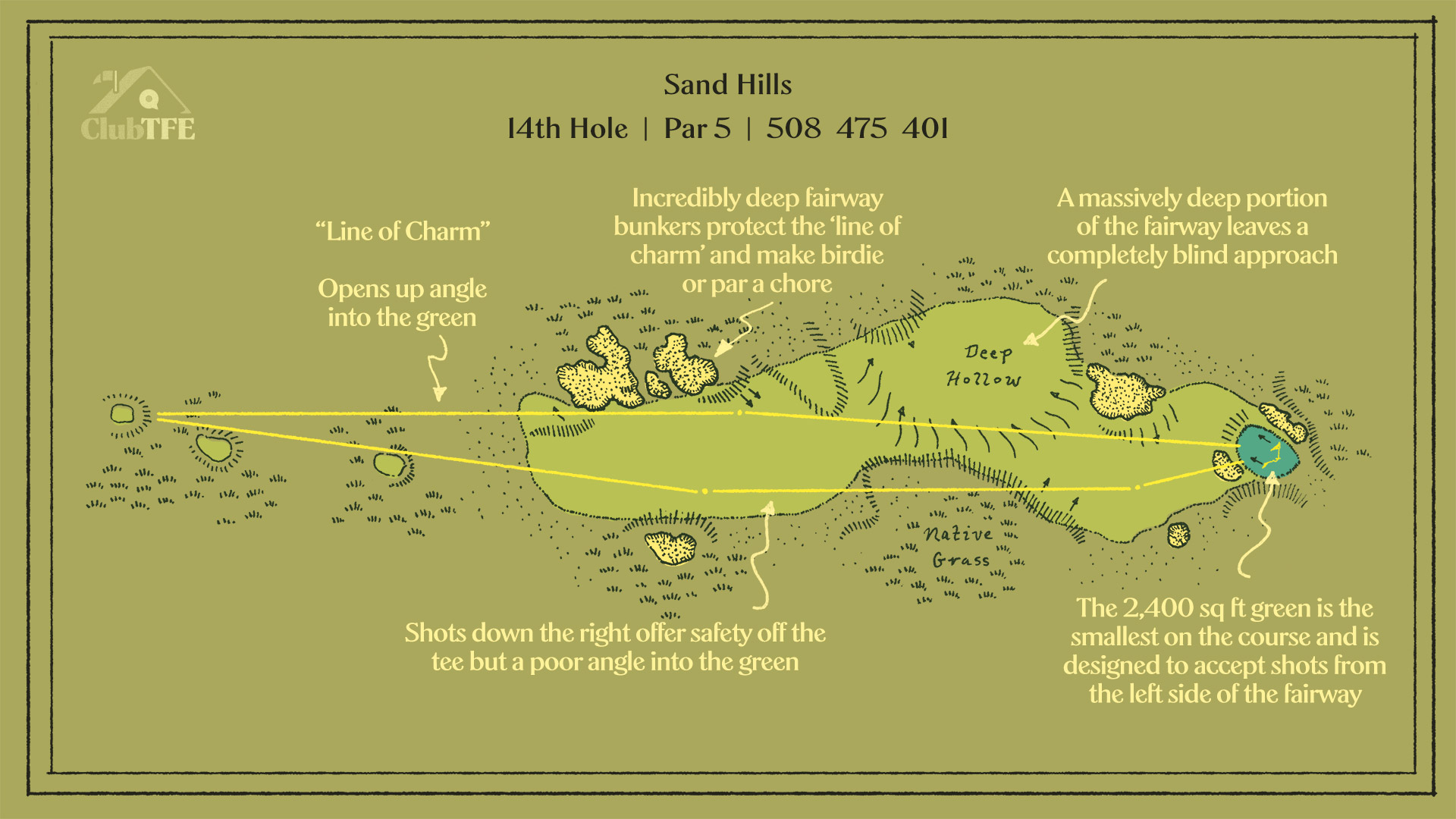
Illustration by Cameron Hurdus
If I were to critique two things about Sand Hills, I’d focus on the 13th hole and the lack of a walking culture. The par-3 13th is breathtaking; I’m just not sure it sets a consistently achievable task. Perhaps it’s yet another victim of increased green speeds, but the margin for holding any part of this green is very slim. As for the walking piece, I’ve been disappointed with how much cart golf at Sand Hills, which is such a wonderful—if hilly—place to walk. To be fair, the Sand Hills membership is on the older side, and most members go there to play golf all day. But I still wish more decided to walk and truly take in one of the cathedrals of the game.
Sand Hills changed golf architecture. It’s a course that should be visited and studied by anyone interested in golf architecture as a profession. And keep in mind that for average joes, Sand Hills is attainable. A letter explaining why you want to experience the course may open up an opportunity for an afternoon round, an overnight stay, and a morning round. Not every letter is answered, but some requests are granted. It’s certainly worth a try. -AJ
Egg score: 3 Eggs*
* Graphic coming soon!
Sand Hills is everything a three-Egg course should be. The land is unique, beautiful, and perfect for golf. The design matches it, as we discussed earlier. It’s varied and strategic, and accommodates a wide variety of shots and skill levels. Superintendent Kyle Hegland does a marvelous job presenting the course, with the native vegetation deserving special praise. When you hit one out of play and into the taller grass, it’s usually easy to find your ball and feasible to get it back in the fairway. This is what well-maintained native does: it allows for the possibility of a heroic shot from an unpredictable lie. And that’s what you find at Sand Hills.
Enjoy this review? We’ll have one of them per week in Club TFE, our new membership program, which launches on January 2, 2023. To learn more about Club TFE and to join, click here!
Additional reading, listening, and viewing
Club TFE Course Chat with Andy and Garrett (mini-podcast):
Bill Coore on Sand Hills (audio clip; apologies for the recording quality!):
Tom Doak on Sand Hills (audio clip):
Superintendent Series: Kyle Hegland (full podcast)
Teaching Turf in the Sand Hills (video series)
Profile of the 18th Hole (article)
Hole-by-hole gallery
-

The gentle par-5 first hole at Sand Hills
-

The stunning par-4 second hole
-

The par-3 third green
-

The tough approach into the par-4 fourth hole
-
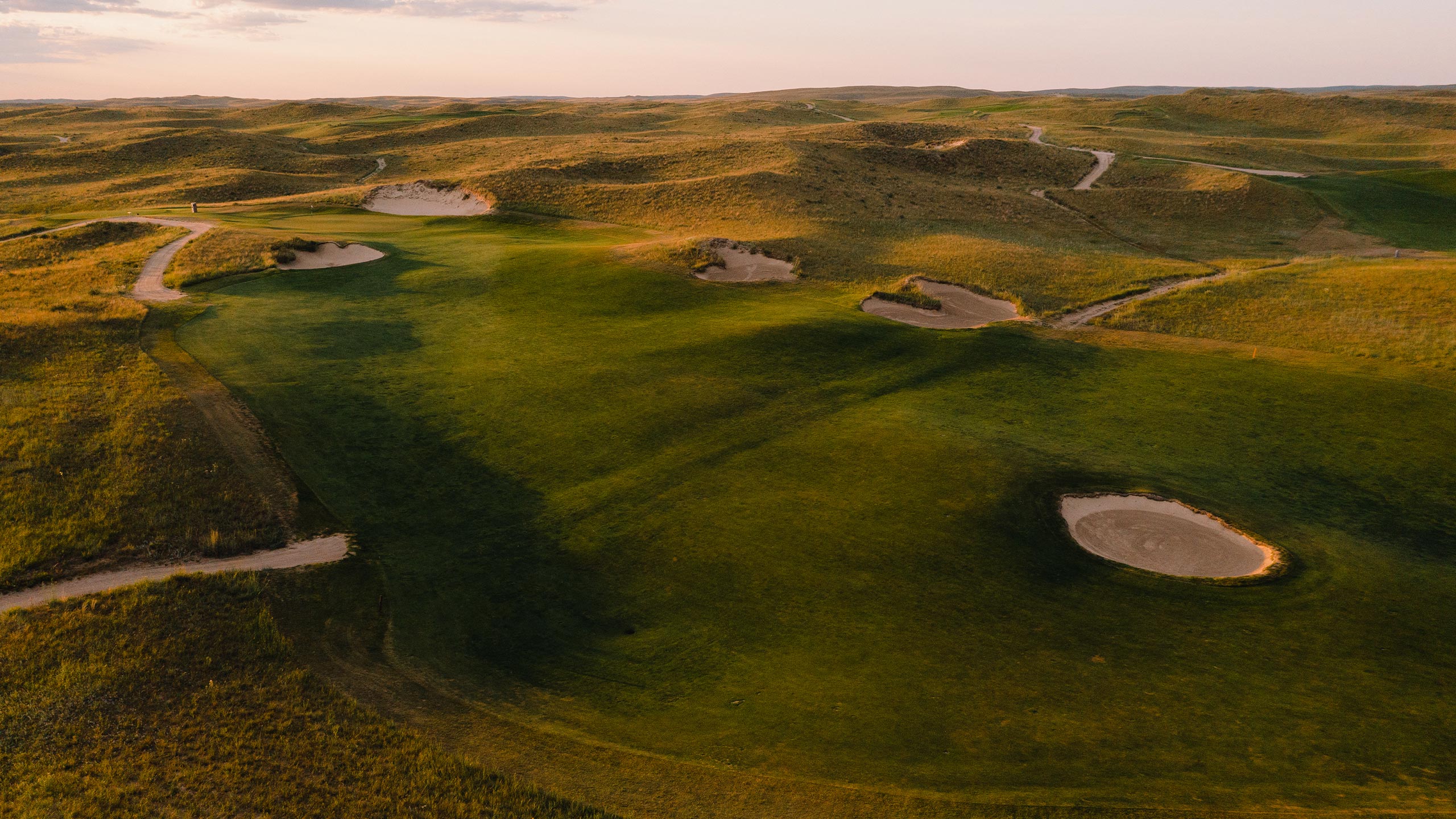
Left or right off the tee on the par-4 fifth hole?
-

Behind the par-3 sixth hole
-

The short par-4 seventh hole
-

The lion's mouth green at the short par-4 eighth hole
-

The stunning topography of the par-4 ninth hole
-

The downhill feeder slope into the par-4 10th green
-
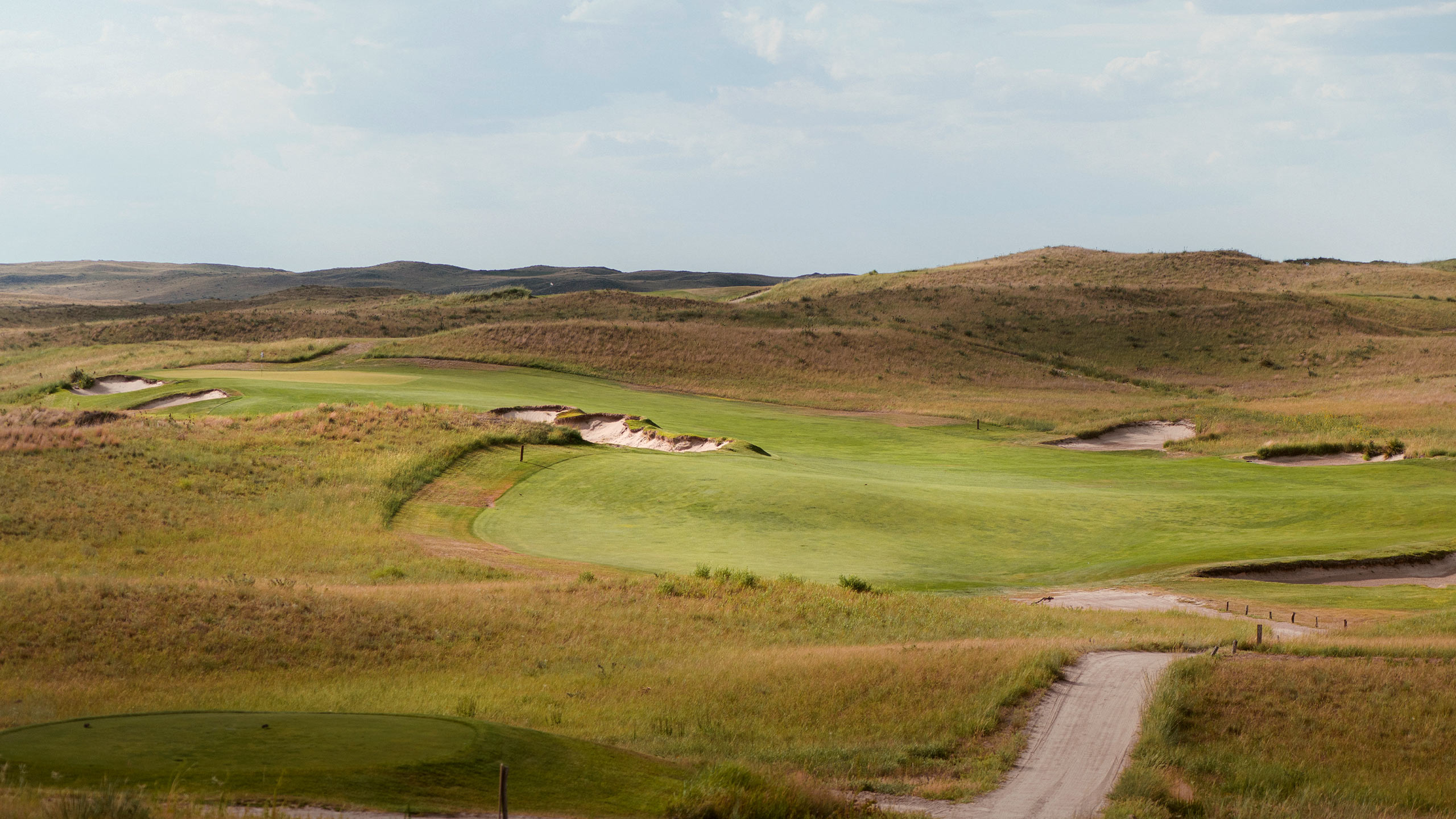
The intimidating tee shot at the par-4 11th hole
-

The hog's back feature in the par-4 12th fairway
-
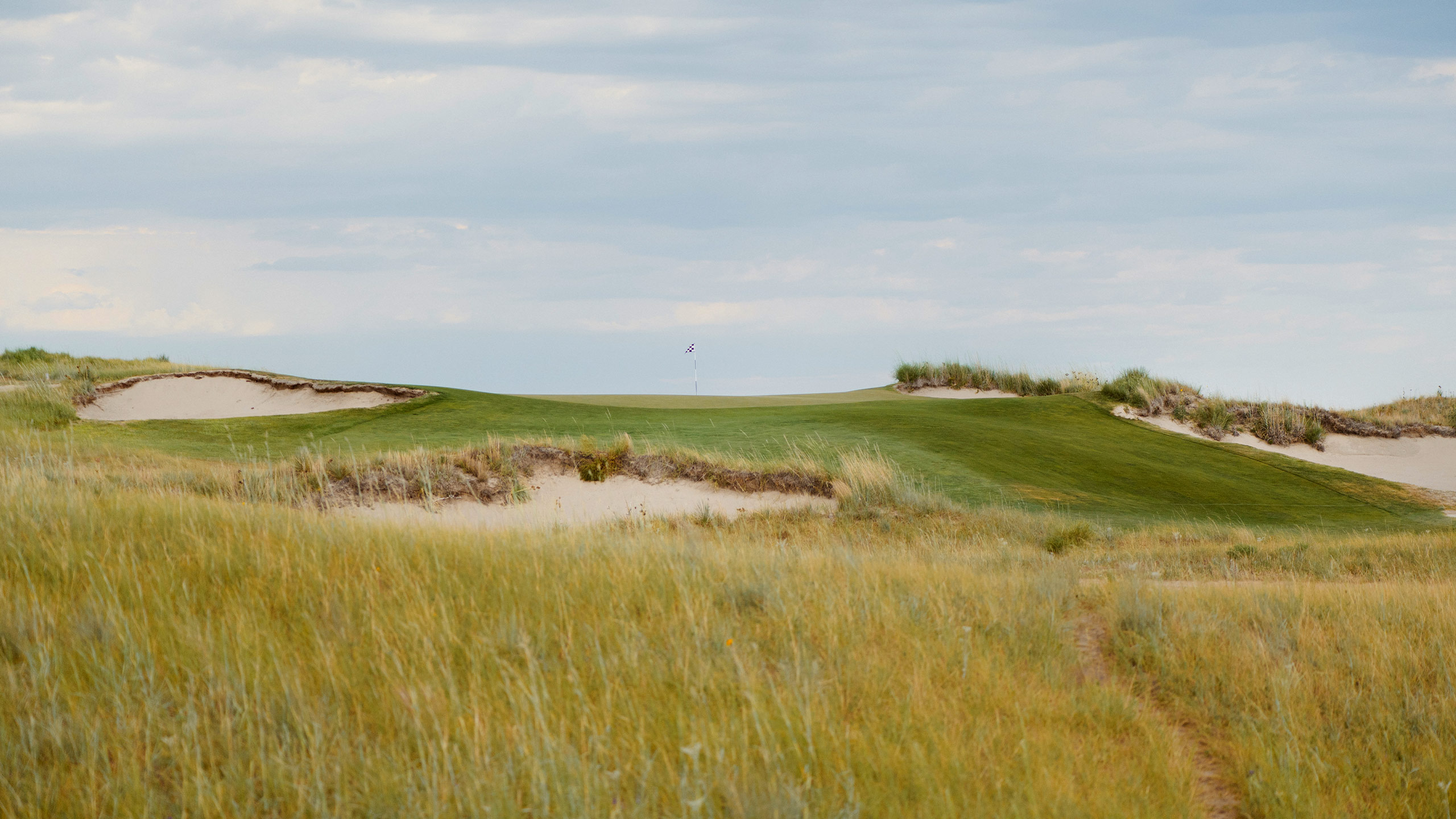
The most taxing shot on the golf course—the tee shot on the par-3 13th hole
-

The amazing land movement at the par-5 14th hole
-

The burly par-4 15th hole
-

The dramatic par-5 16th hole
-

The well-protected par-3 17th hole
-

The unforgettable closing hole at Sand Hills


 by
by 
